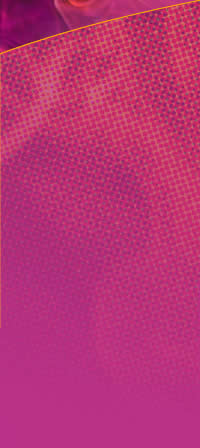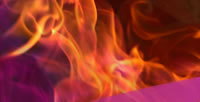
Mystiek > Over mystiek > Geschiedenis > Christelijk
Appendix (26)
Engelse mystiek in de zeventiende eeuw
In the seventeenth century England was peculiarly rich, if not in great mystics, at any rate in mystically minded men, seekers after Reality. Mysticism, it seems, was in the air; broke out under many disguises and affected many forms of life. It produced in George Fox (1624-1690), the founder of the Quakers, a "great active" of the first rank, entirely unaffected by tradition; and in the Quaker movement itself an outbreak of genuine mysticism which is only comparable to the fourteenth-century movement of the Friends of God.
We meet in Fox that overwhelming sense of direct relationship with God, that consciousness of the transcendent, characteristic of the mystic; and Quaker spirituality, in spite of its marked aversion to institutional religion, has much in common not only with those Continental Quietists who are its most obvious spiritual affinities, but also with the doctrine of the Catholic contemplatives. Mysticism crops up frequently in the writings of the school; and finds expression in the first generation in the works of Isaac Penington (1616-1679) and in the second in the Journal of the heroic American Friend John Woolman (1720-1772).
At the opposite end of the theological scale, the seventeenth century gives us a group of English mystics of the Catholic type, closely related to the contemporary French school. Of these, one of the most individual is the young Benedictine nun Gertrude More (1606-1633), who carries on that tradition of the communion of love which flows from St. Augustine through St. Bernard and Thomas à Kempis, and is the very heart of Catholic mysticism. In the writings of her director, and the preserver of her works, the Venerable Augustine Baker (1575-1641) one of the most lucid and orderly of guides to the contemplative life we see what were still the formative influences in the environment where her mystical powers were trained. Richard of St. Victor, Hilton, and "The Cloud of Unknowing"; Angela of Foligno; Tauler, Suso, Ruysbroeck; St. Teresa and St. John of the Cross; these are the authorities to whom Augustine Baker most constantly appeals, and through these, as we know, the family tree of the mystics goes back to the Neoplatonists and the first founders of the Church.
Outside that Church, the twins Thomas Vaughan the spiritual alchemist and Henry Vaughan, Silurist, the mystical poet (1622-1695) show the reaction of two very different temperaments upon the transcendental life. Again, the group of "Cambridge Platonists," Henry More (1614-1687), John Smith (1618-1652), Benjamin Whichcote (1609-1683), Peter Sterry (c. 1614-1672), and John Norris (1657-1711) developed and preached a philosophy deeply tinged with mysticism; and Thomas Traherne (c. 1637-1674) gave poetic expression to the Platonic vision of life. In Bishop Hall (1574-1656) the same spirit takes a devotional form. Finally, the Rosicrucians, symbolists, and other spiritually minded occultists - above all the extraordinary sect of Philadelphians, ruled by Dr. Pordage (1608-1698) and the prophetess Jane Lead (1623-1704) - exhibit mysticism in its least balanced aspect mingled with mediumistic phenomena, wild symbolic visions, and apocalyptic prophecies. The influence of these Philadelphians, who were themselves strongly affected by Boehme's works, lingered for a century, appearing again in Saint-Martin the "Unknown Philosopher."
Zonder verandering is er iets in ons dat blijft slapen, en dat zelden wakker wordt. De slaper moet ontwaken.
- Frank Herbert -
Roemi: Daglicht
Een dagboek van spirituele leiding. Nederlandse vertaling door Sipko den Boer en Aleid C. Swierenga
 "Daglicht" is een bloemlezing met teksten van de Perzische mysticus Roemi (1207-1273). Ik vond dit boek dermate bijzonder, dat ik het graag langs deze weg aan
"Daglicht" is een bloemlezing met teksten van de Perzische mysticus Roemi (1207-1273). Ik vond dit boek dermate bijzonder, dat ik het graag langs deze weg aan
Meer...
WaalWeb Internetproducties
Zinrijk Webtechniek
© 2006-7








